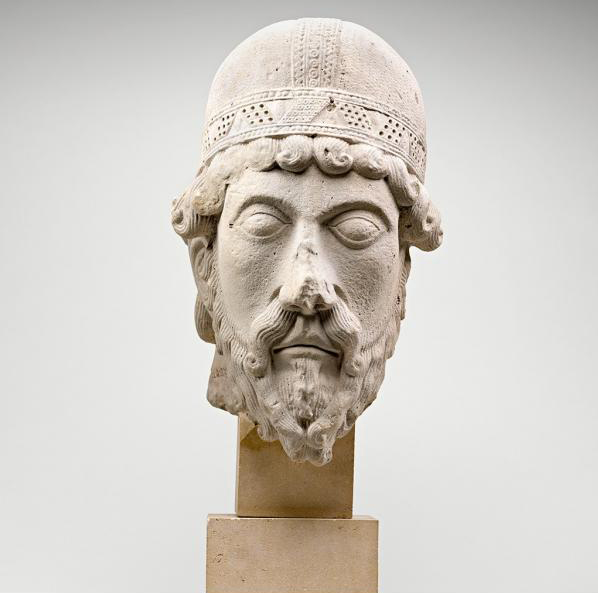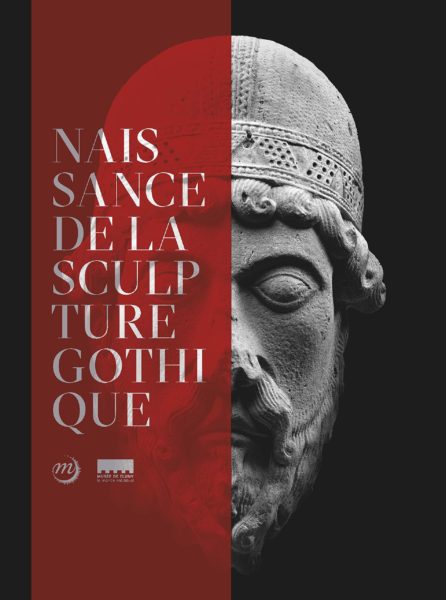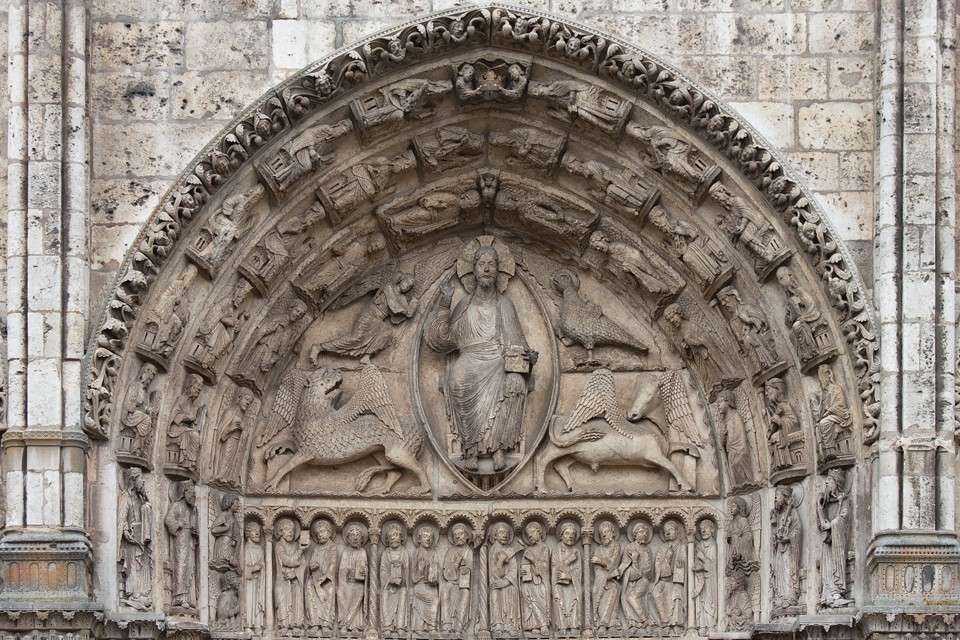After an extensive renovation of the Musée de Cluny in Paris, the first major exhibition focuses on the birth of the Gothic sculpture in and around Paris.
 Between 1135 and 1150, a new and revolutionary art form was launched at St. Denis north of Paris. Here Abbot Suger ruled from 1122, and it was here, he propelled an aesthetic rethinking as well as the massive rebuilding of the Abbey church. In the following centuries, this came to set its mark from one end of Europe to the other. Labelled Gothic – that is antiquated and barbarous – by the masters of the Renaissance, contemporaries thought of it as highly modern.
Between 1135 and 1150, a new and revolutionary art form was launched at St. Denis north of Paris. Here Abbot Suger ruled from 1122, and it was here, he propelled an aesthetic rethinking as well as the massive rebuilding of the Abbey church. In the following centuries, this came to set its mark from one end of Europe to the other. Labelled Gothic – that is antiquated and barbarous – by the masters of the Renaissance, contemporaries thought of it as highly modern.
Suger was a jack-of-all-trades. Accomplished politician, writer, and administrator, we never the less know him best as a dedicated patron of his Abbey, as witnessed today by the rebuilt western end, the famous ambulatory and shrine choir, and the creative use of stained windows and sculptural embellishments. Out of reverence for the old Merovingian church, Suger was keen to preserve the fabric of yesteryear. Nevertheless, the new Abbey Church at St. Denis came to be considered the crucible of Gothic Art. Not least, because we have personal reflections preserved in his writings and his testament on what he thought about his building projects – theologically, aesthetically, and regarding practicality.
Nevertheless, St. Denis has an obscure artistic context. The challenge is, that we seem to know so much about St. Denis, that we forget that considerable parts of the surrounding edifices and preserved artistic legacy is not so well dated. The question is, what and whom, inspired Suger? And what influence did Suger and St. Denis have on the burgeoning art scene of île-de-France? Thus, it is still debated whether Chartres inspired St. Denis or vice-versa. Also, did the choirs in the Cathedral at Noyon and in the Abbey church at St-Germer-de Fly predate or postdate the work of Suger?
One of the significant elements to ponder in connection with this question is the use of early Gothic Sculpture, which spread throughout the île-de-France region from 1135 – 1150. The most prominent feature was, of course, the use of triple portals flanked by sculptures, such as is still preserved at Chartres. We know from fragments of the portals from St. Denis as well as a series of pre-revolutionary drawings from the 18th century that such sculptured portals also graced the Abbey church.
However, this early Gothic sculpture was not limited to the emblematic portals adorned with column-statues, while new models circulated and new forms of expression were explored. An unprecedented virtuosity in the cutting and carving of stone allowed for infinite variations on decorative themes, which were shared with illuminations and stained-glass windows. With a sense for narration and a marked taste for the monumental, such refined and detailed work helped to spread the new artistic gospels across borders.
This autumn, Musée de Cluny invites the public to enjoy, study, and compare the magnificent sculptural heritage of the early 12th century and how it came to inspire Europe in a gigantic wave rapidly reaching the outer shores of England, Scotland, and Germany. With loans of statues from the Royal Portal at Chartres, the fragmentary vestiges of those from the western portals of the Abbey in Saint-Denis, as well as other sculptural remnants from the Sainte-Anne Portal of Notre-Dame de Paris and the Saint-Denis Cloister, visitors will be able to observe how the birth of a whole new form of art came about.
Afterwards, it is suggested to make a short detour to St. Denis, in order to experience the Cathedral, as it stands today, as well as the interesting archaeological museum where finds from extensive excavations are exhibited.
Under the leadership of its curators, Damien Berné and Philippe Plagnieux, the exhibition brings together about 130 works. In addition to the collections in the Musée de Cluny Museum and the Louvre, sculptures and other pieces of work have been loaned from museums in France as well as abroad
VISIT:
Birth of Gothic sculpture. Saint-Denis, Paris, Chartres 1135-1150
Cluny Museum – National Museum of the Middle Ages
10.10.2018 – 31.12.2018
Curators: Damien Berné, Heritage Curator at the Musée de Cluny, and Philippe Plagnieux, Professor of Medieval Art History (Université Paris 1 Panthéon-Sorbonne & École Nationale des Chartes). In partnership with RMN-GP.
SEE MORE:
With a database of images, texts, charts and historical maps, Mapping Gothic France invites you to explore the parallel stories of Gothic architecture and the formation of France in the 12th and 13th centuries, considered in three dimensions. The Mapping Gothic France project was initiated by Stephen Murray, Professor of Art History and Archaeology at Columbia University and Andrew Tallon, Assistant Professor of Art at Vassar College and funded through the generosity of the Andrew W. Mellon Foundation. Mapping Gothic France was developed within the framework of collaboration between the Media Center for Art History in the Department of Art History and Archaeology at Columbia University, the Visual Resources Library at Vassar College, and the Columbia University Libraries.
READ:
 La naissance de la sculpture gothique en Ile de France
La naissance de la sculpture gothique en Ile de France
de Collectif
Series: RMN Architectur
RMN 2018
Microarchitectures médiévales : L’échelle à l’épreuve de la matière Broché
Ed. by Jean-Marie Guillouët (Sous la direction de), Ambre Vilain (Sous la direction de) Coédition Picard
Collection : PICARD HISTOIRE
ISBN-10: 2708410423 ISBN-13: 978-2708410428

